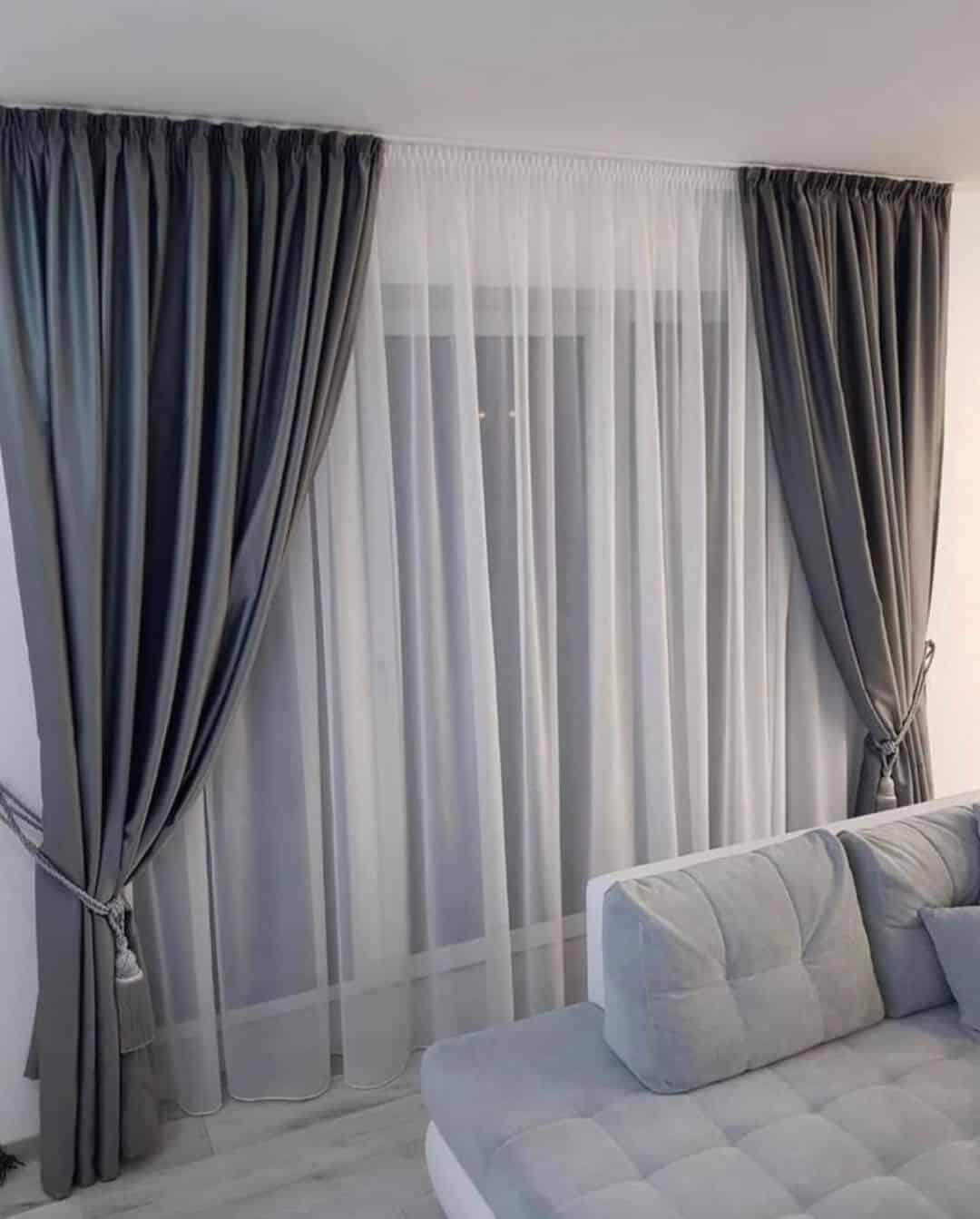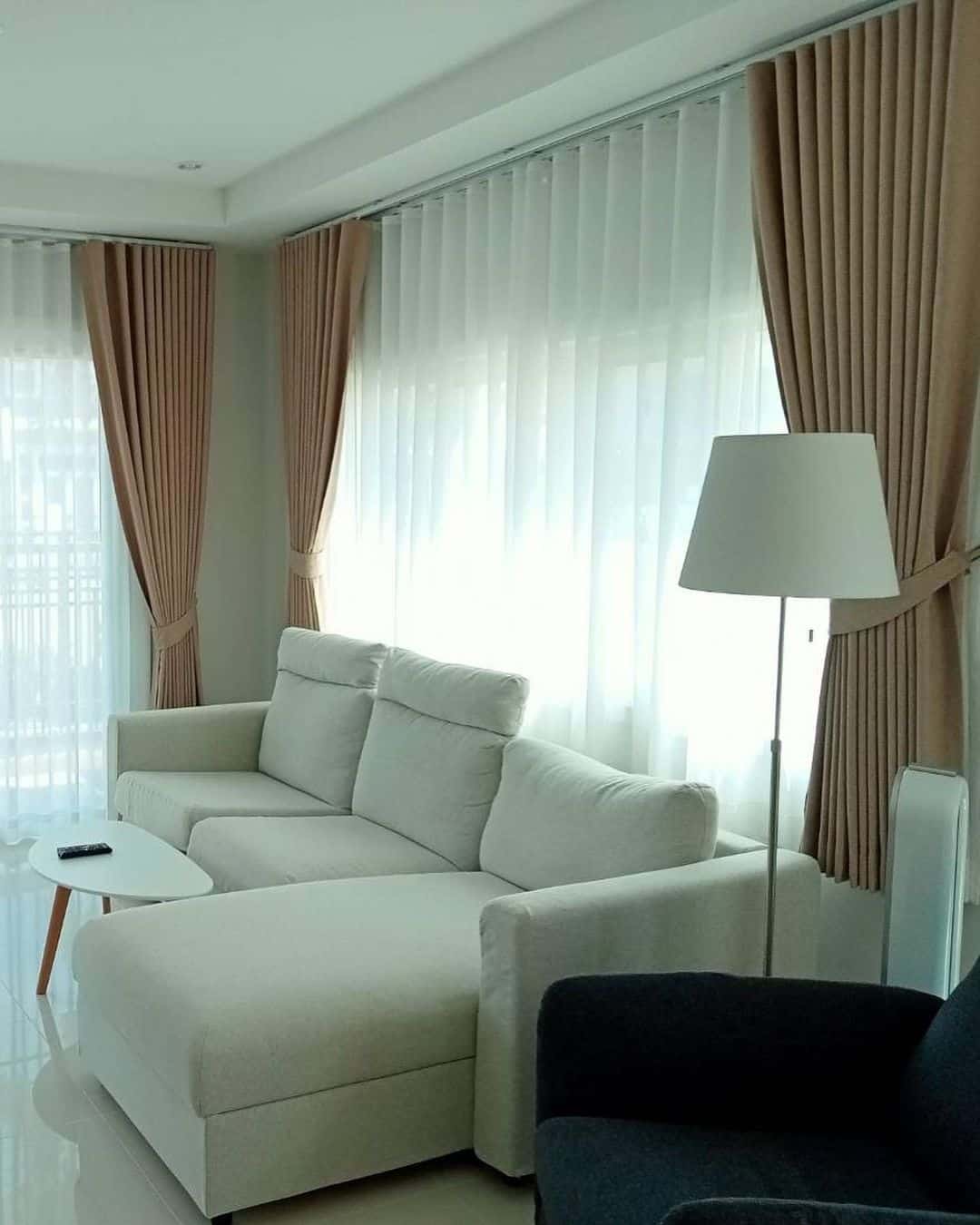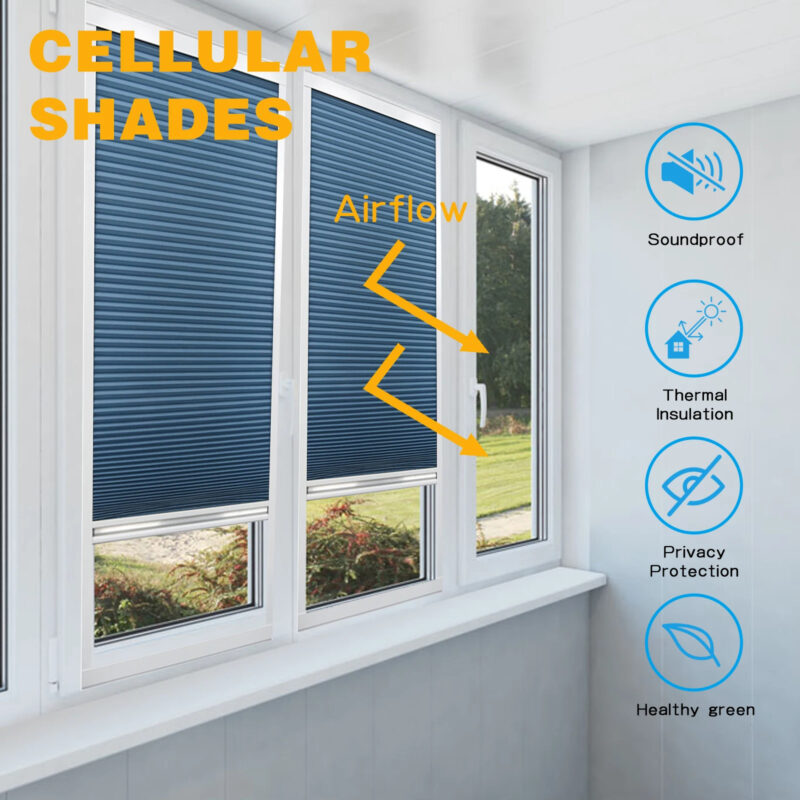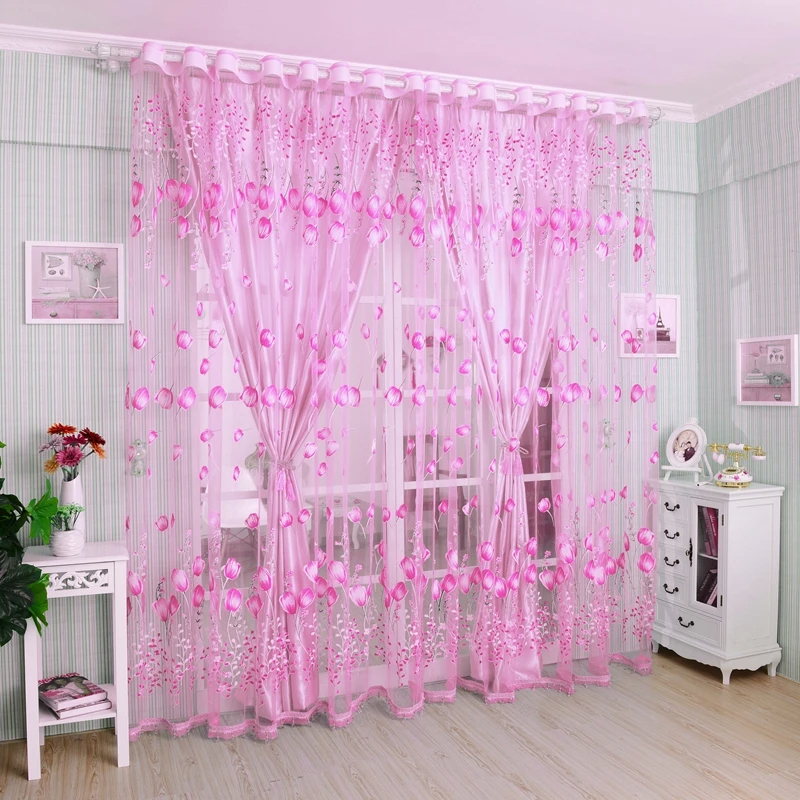How To Choose Right Window Curtain Length? (Easy Steps)

Curtains make up a big part of interior design and can visually enhance a room if done correctly. Not taking steps to ensure you have the proper length curtains can result in aesthetically unpleasing rooms and can ruin even the best-looking rooms.
If you are looking to buy curtains, you are probably wondering how to choose the right window curtain length. In this article, we will discuss how to choose the best curtain length for your window. Keep reading to learn more.
Tools You’ll Need
- Measuring Tape
- Stud Finder
- Pencil
How To Choose The Right Window Curtain Length
Standard curtain lengths are usually found in 63″, “84, 94″, 108″, and 120”. However, there are different factors to consider when determining the right window curtain length for your situation.
Everything from the curtain fabric and ceiling height to whether you have pets or children can be vital pieces of information when figuring out where you should put your curtains.
It can be hard to make the right choice, so here we show you how to choose the right window curtain length so you can have dazzling window treatment in any room of your home.
1. The Length Style Of The Curtain
There are a few different curtain styles to choose from, and each one has its own unique purpose. Here are the most common styles of curtains and what rooms they go best in.
- Window sill: This style curtain only goes to the top of the window sill.
- Apron length: Apron curtains are also short curtains and are only meant to go four inches past the window.
- Floor length: The most popular style of curtain is floor-length curtains, and these are found on most standard windows. Floor-length curtains, as their name suggests, are right at floor length and barely graze the floor.
- Puddle: Sometimes, people choose to go with puddle curtains. Puddle curtains are about 4″-6″ longer than the floor length and “puddle” on the floor.
2. The Room

The room that your curtains are going in is probably not something you would think to pay attention to, but it makes a difference in what curtains you need to get.
Window sill curtains are best for small windows like windows above the kitchen sink, bathroom sinks, and laundry rooms, while floor-length curtains go best in places like your living room.
Apron curtains also go well for kitchens and more laid-back spaces like a reading nook. Apron curtains are also seen in spaces like kids’ rooms. To make a living room feel cozy, you can opt for apron-length curtains versus floor length.
Finally, while puddle curtains are not popular, they are seen in less high-traffic areas and rooms that you want to feel more elegant such as dining rooms and master bedrooms.
3. The Curtain Fabric
The fabric of the curtain will also play a part in choosing the right length for your curtains. Some curtains are lightweight and sheer, while others are thick and heavy. Here are the most common curtain materials and what they are best for.
- Cotton: Cotton is a popular choice for curtains because they are just the right amount of thickness and are versatile enough to use in almost any room. They are also fairly easy to clean and offer a slight light filter.
- Linen: Linen curtains are delicate and are recommended for rooms that don’t get dirty easily because they require dry cleaning. They have a tailored look, are fade resistant, and allow plenty of light to fill the room.
- Velvet: Velvet curtains are heavy and help block light, as well as offer some protection from drafts and sounds. They are great to use in more elegant rooms such as dining rooms and master bedrooms. This is a great curtain fabric to use puddle length with
- Silk: Silk curtains are actually heavier than other curtains and provide a romantic feel to any room. However, it is best to only use silk curtains in rooms away from direct sunlight as they are prone to UV damage and fading. They are also dry clean only, which doesn’t make them a good choice in high-traffic areas or if you have pets.
- Polyester: Polyester is probably the most popular curtain fabric as it is the most affordable and easiest to clean. Polyester curtains are very durable but are also more flammable than other materials, so you shouldn’t put them in areas where they could catch fire, like kitchens or near candles. Blackout curtains are usually made out of polyester or a polyester-cotton blend.
- Sheers: Sheers are incredibly lightweight and offer a bit of privacy while allowing plenty of sunlight into the room. If you love the look of sheers but want more light filtering, you can use a double rod and pair sheer curtains with another material like cotton or polyester.
4. Determine Your Ceiling Height

After you have taken everything else into account, it is time to determine your ceiling height. The height of your ceilings will help you determine how far above your window trim you should hang your curtains.
Higher ceilings will require longer curtains than the standard curtain length. If you have low ceilings, there are a few tricks you can use to make your ceilings appear higher and make your room feel bigger.
You can make your ceiling feel higher if you place your rod higher up than usual. This makes the room appear more open as opposed to if you put your curtain rod at the standard level.
You can place your curtain rod as high as 3″-4″ below the ceiling. Just be sure to keep your curtain rod in consideration when measuring.
Some curtain rods have big end caps, and you don’t want them to hit the ceiling or crown molding.
5. Measure Your Windows
Now it is time to measure your windows. Use a measuring tape to measure from where you want your curtain rod to go to where you want your curtains to fall, and mark it with a pencil.
A good rule of thumb is to measure 10″ on each side of the window frame and 10″ above the top of the window frame to where you want your curtains to fall unless you want to elongate your windows or make your ceilings look higher.
However, if you have higher ceilings, you will need to place your curtain rod higher than 10″ above the top of the window frame as well. I would recommend 12″-24″, depending on how high your ceilings are.
If you want apron curtains, measure 4″-6″ under the window sill, and If you choose floor-length curtains, you will measure to the floor. For puddle curtain length, just add 4″ to 6″ to the floor length.
For window sill curtains, only measure from where you choose for your rod to be to the top of the window sill. Now, just find the length that matches this measurement the closest, and you are good to go.
More Helpful Information

- Use a stud finder where you can drill before you measure. Sometimes, you can only hang your rods where there is a stud. You wouldn’t want to take all of that time measuring exactly where you want and finding the right curtain length just to have to remeasure and exchange the curtains if you can’t find a stud where you originally measured.
- If you have extra high ceilings or oddly shaped windows, consider getting your curtains custom-made. It is more expensive, but it may be worth it, in the long run, to make sure you have the proper length. It is also worth the extra cost to invest in custom-made curtains if you want extra light filtering with a lighter fabric. You can purchase a blackout liner to go with any curtain material, so if you don’t know how to sew, this may be a good idea.
- Puddle curtains will dirty up easier as they lay on the floor. They are prone to collect dust and pet dander, so keep this in mind if you have pets. Also, if you have babies that are crawling age, they could get trapped in puddle curtains, and it could be dangerous.
Conclusion
There are many factors involved in choosing the right curtain length, and I hope this article helps you determine what length is best for you. If you have any questions or concerns, let us know in the comments! We love hearing from our readers.









